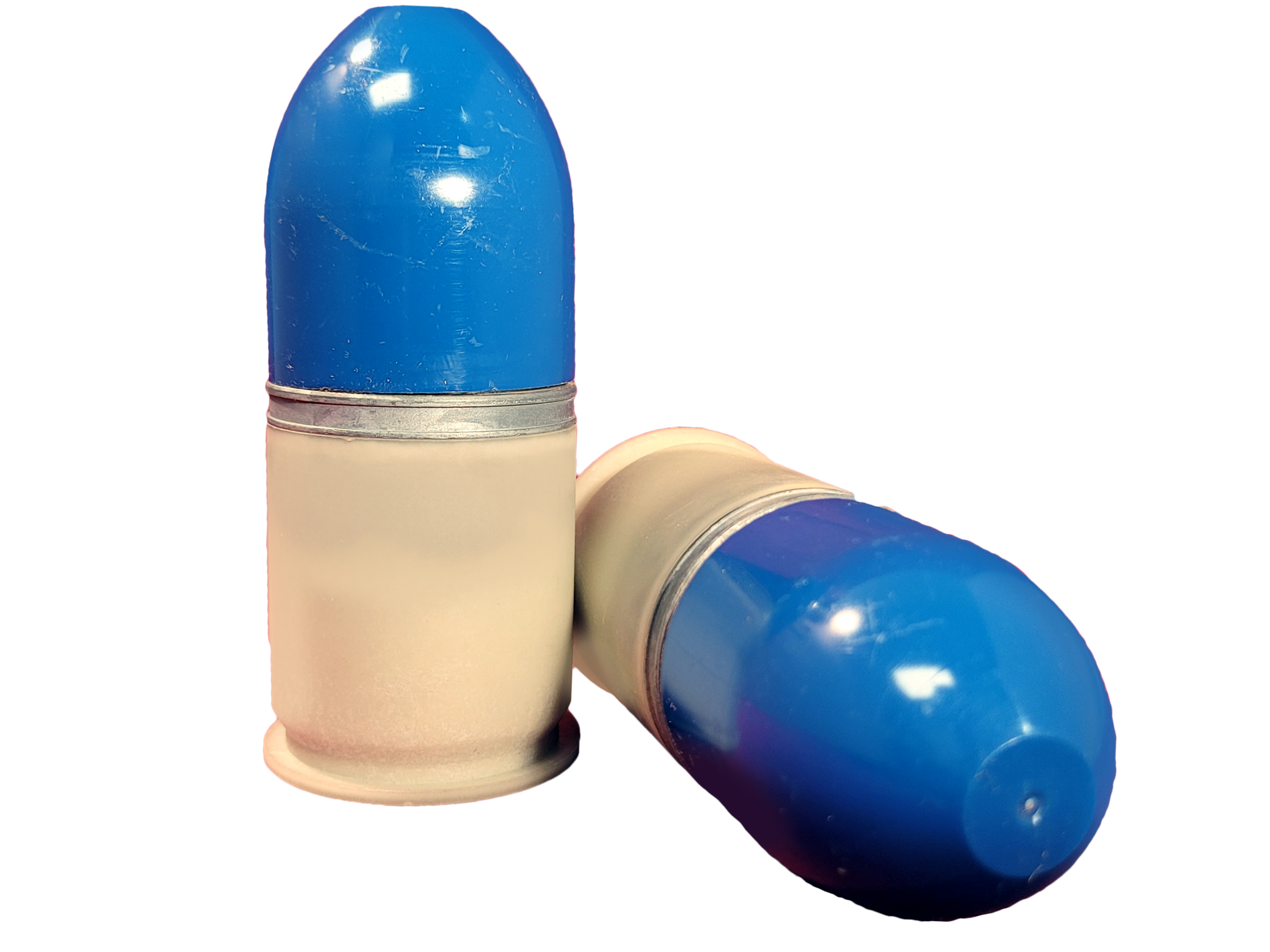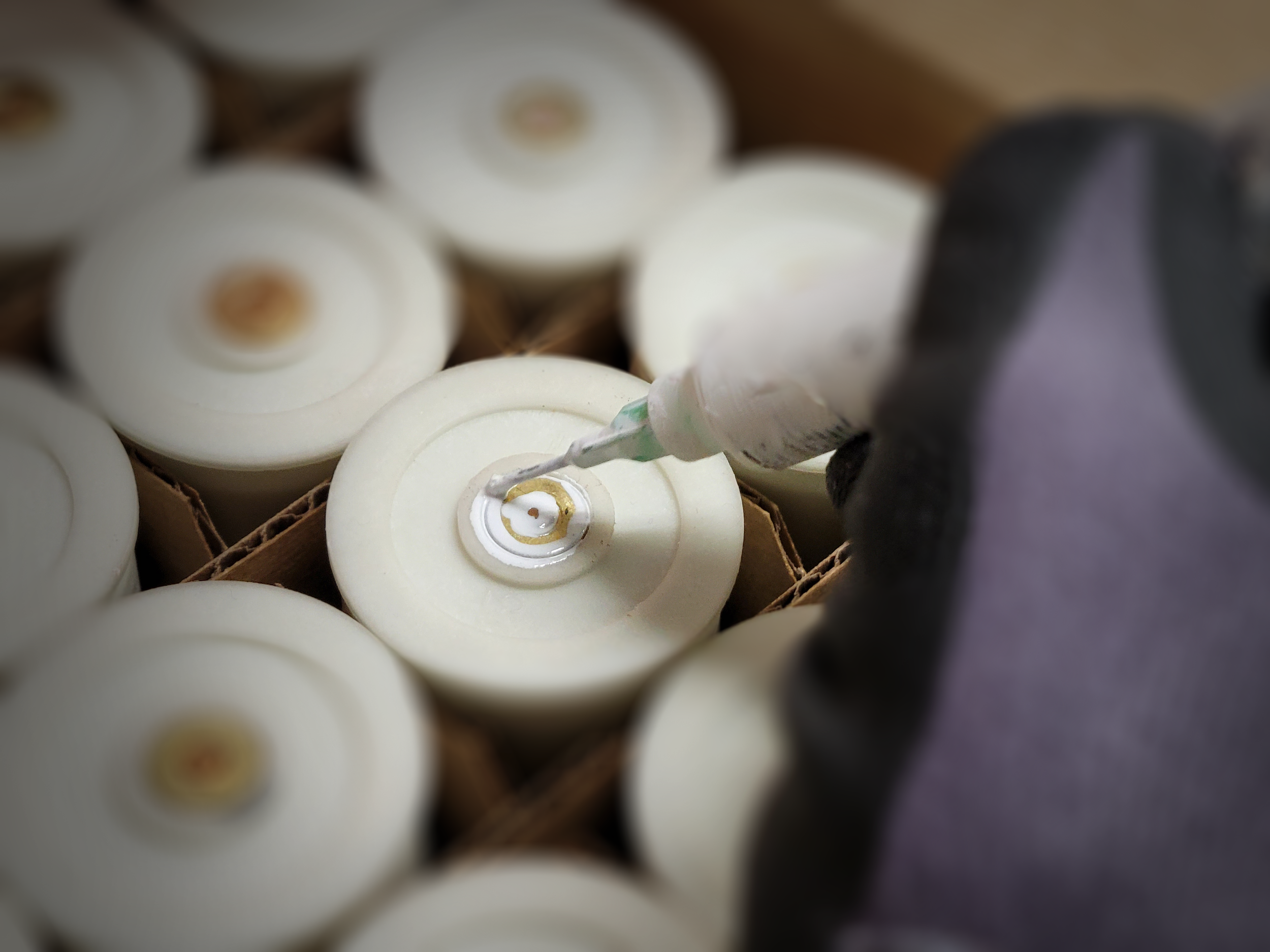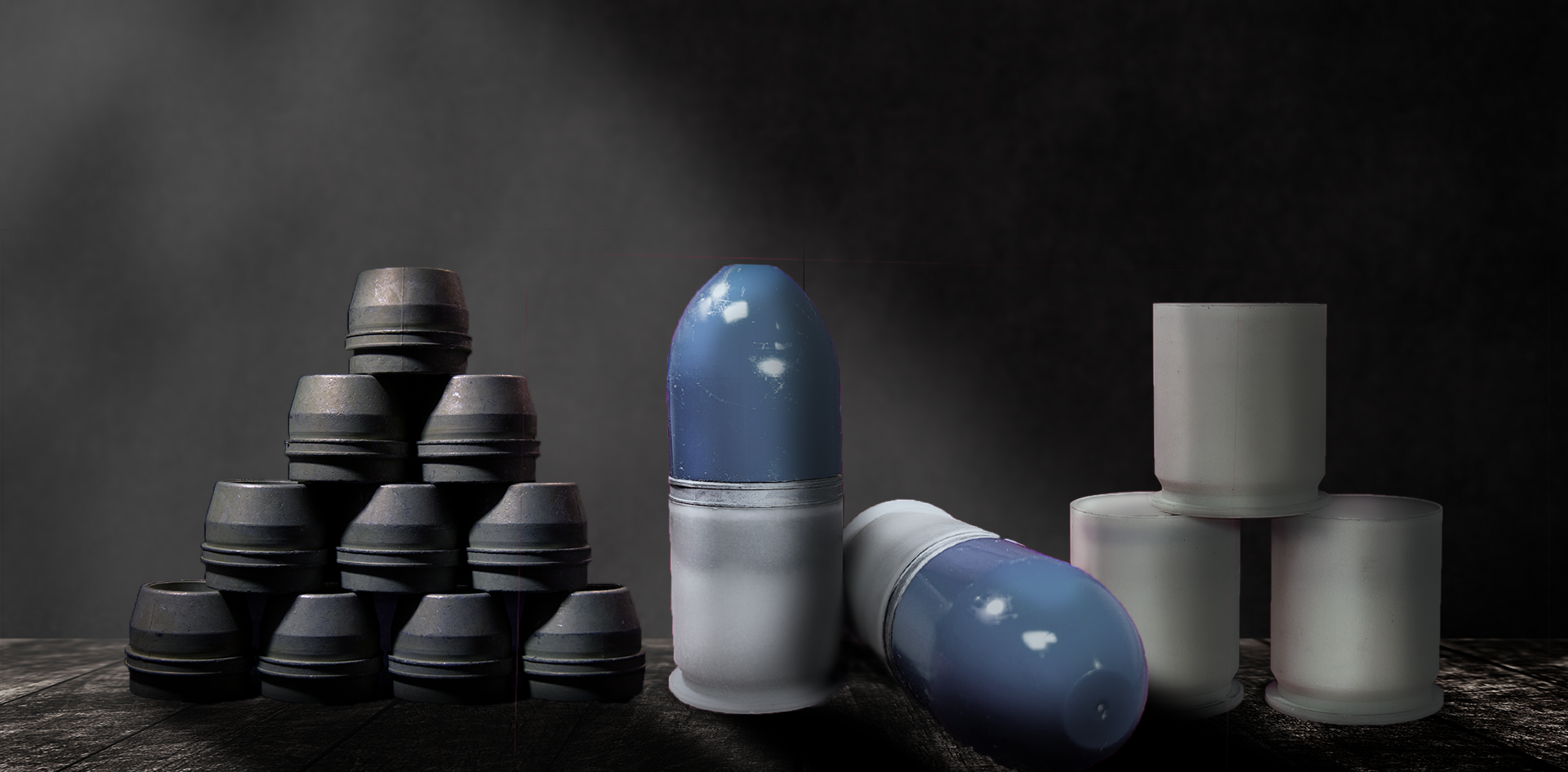
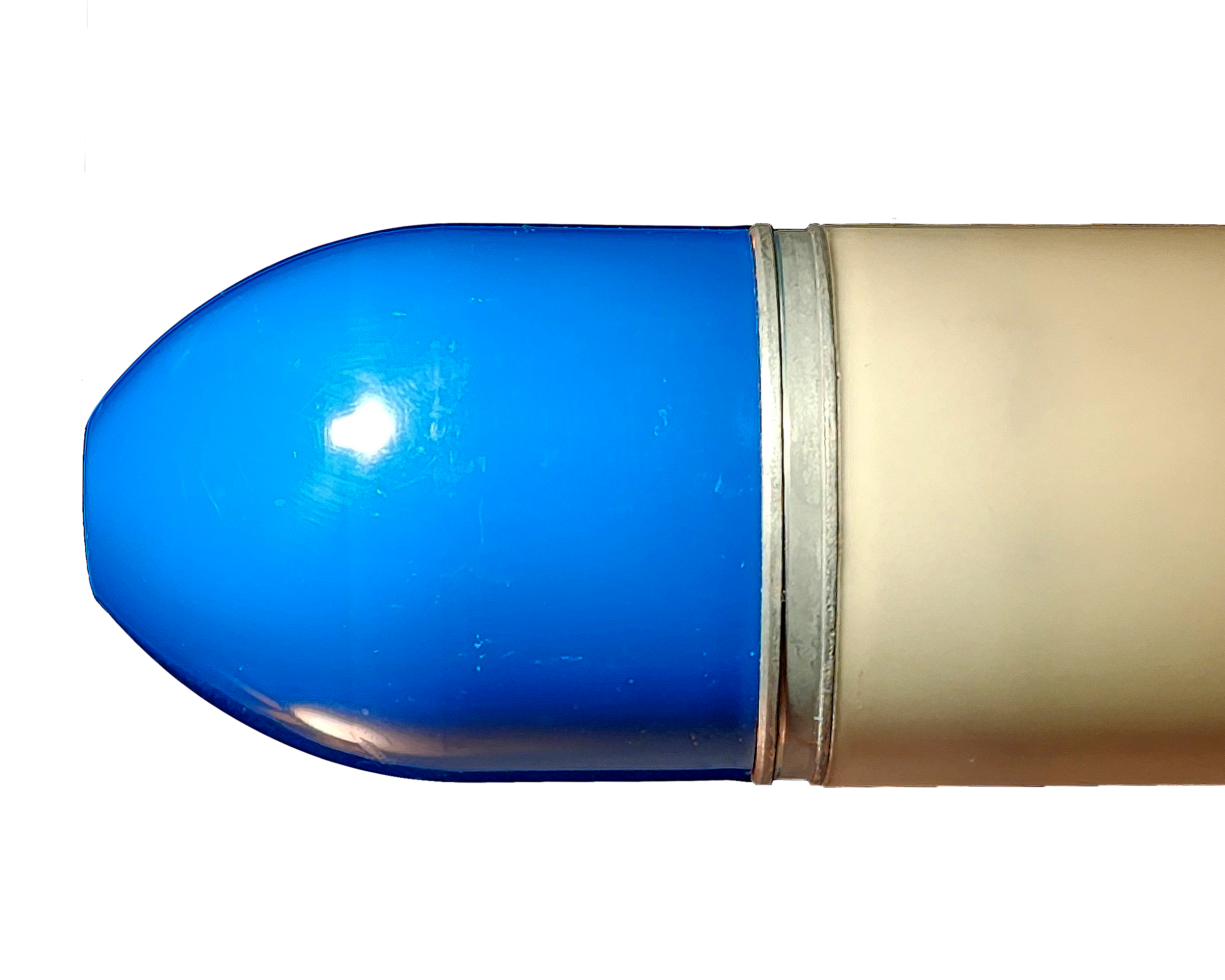
The M781 40mm Chalk Round
the 40mm M781 was designed to be an area weapon in the 1960’s. Since then, technologies have emerged to allow innovations in the round, allowing the 40mm platform to serve purposes beyond their original intended use. Now, the M781 is developed with a signal dye in the nose cone (referred to as an Ojive/Ogive) to train soldiers to fire the M433 Low Velocity HEDP round. These new M781 rounds release orange dye to provide instant feedback to the trainee.
UDC produces M781 40mm Low Velocity rounds for government and commercial sale for trainers and 40mm enthusiasts alike.
Description:
NSN: 1310-01-211-8073
Nomenclature: 40mm M781, 40mm Practice Cartridge Low Velocity
Appearance: A white to tan plastic M212 base with a blue plastic Ogive/Ojive nose cone
Function: The M781 is a training round to be used in the M203 or M79 40mm grenade launchers. It is designed to train soldiers to fire the M433 Low Velocity HEDP round. Upon impact of the 40mm M781, the windshield shatters, releasing a orange cloud of signal dye which is loaded in the nose cone.
Performance:
Velocity: 240 +/- 8 fps
Std Dev: Less than or Equal to 5.0 fps
Body: White Plastic Base (M212), Zinc Single-cavity Cast, Blue Plastic Nose Cone. The majority of the projectile’s weight is from the zinc body. The propellant charge is contained within a 38 S&W case inserted into the M212.
UDC Manufactures M781 for both Government application as well as Commercial sale. If you have more questions about 40mm M781, please contact the defense experts of UDC.
The M781 round simulates the path of the HEDP round and creates an orange dust cloud upon impact. It is a lower cost than the live HEDP round. It is also only 1.4S in shipping and use. There is zero risk of UXO downrange when using the M781, since the projectile only contains the plastic windshield, zinc body and signal dye. There are never any energetics in the projectile of the M781.
The round is ideal for initial training and re-qualification in the 40x46mm. Various military services and agencies around the world have different training requirements, and some agencies have the user fire 20 to 25 rounds per year as a re-qualification and they may have never fired the HEDP round, while others have them fire up to 50 training rounds and 1 live round. This is why the 40mm M781 Chalk Round proves so useful, providing a safe and more affordable means of training 40mm grenade rounds.
The training rounds are also ideal for verification of new weapon sites or other optical devices. The operator can fire multiple rounds to become familiar and competent with the new optical devices. It is also ideal to confirm function after a barrel swap.
M781 Cartridge – The purpose of this cartridge is to be the ballistic match of the 40x46mm M433 High Explosive Dual Purpose (HEDP). The M433 is the combat round that has high explosives and a shape charge.
Windshield – This is a 6/6 Nylon ‘cap’ to form the ogive of the cartridge. This part is molded with a .015-inch-thick break point around the entire diameter. It can be seen in the photo as the inner step area. This allows the round to break upon impact. However, this makes it very difficult to pass a 1 meter drop test, since this part is designed to break upon impact.
Signal Dye – This material is dry paint pigment that is very fine powder. Upon impact it creates a cloud of dust. The standard color is orange.
Projectile Body – This is a zinc part that is molded to size to include the rotating bands. The HEDP round has copper rotating bands. These zinc bands create a similar friction force. The design of the part allows for ballistic stability. The projectile assembly (windshield and body) are nearly identical to the M433 projectile weight.
M212 Cartridge Case – This is a 6/12 Nylon molded part. It is plastic to reduce cost and weight. The 38 blank is inserted into the M212. The specification over time has changed considerably. At one point in time the node on the inside, that holds the 38 blank was not allowed to crack in anyway. This proved to be difficult, especially at cold conditions. Current revision of the specification allows cracking of the node, as long as no cracking occurs to the outside. This is to ensure that the cartridge does not crack in a manner that would make extraction difficult.
Closing disc – This metal component retains the M9 Flake propellant inside the .38 caliber cartridge case blank. Prior to assembly in to the M212, the .38 is what is commonly referred to as a blank cartridge (without projectile). This disc does provide some protection against the elements, however there is no waterproof requirement on the full up M781 cartridge nor the inner 38 blank cartridge.
Flake Propellant – this is the charge in the 38 blank to propel the projectile down range. The M9 is the Mil-Spec required propellant. There are commercial alternatives. This is very fast burning pistol propellant.
Percussion Primer – This is the ignition device for the 38 blank and the entire round. This is a Mil-Spec primer, so it is harder than standard commercial primers.
If you have questions about the 40mm M781, or would like to request a quote, select an option below
Submit a contact form for questions regarding our Medium Caliber Products
Download UDC’s complete product catalogue
Request a quote for a product from UDCs catalogue

